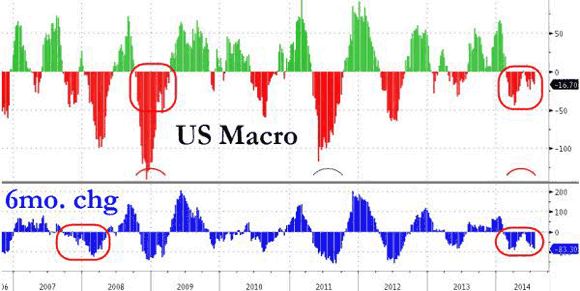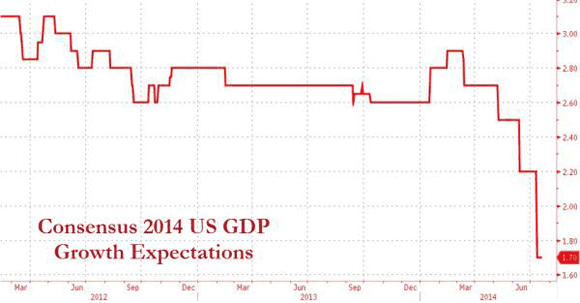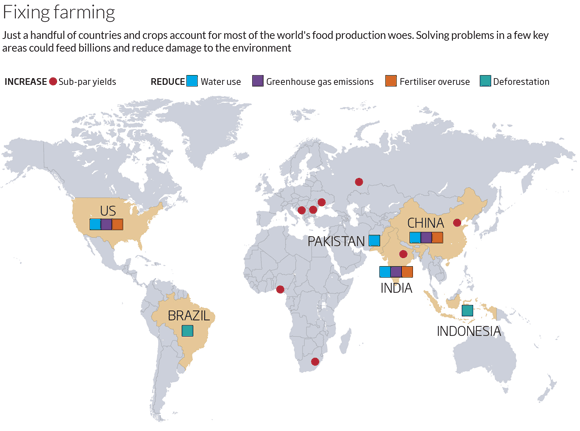
Clyde H. Sunderland PanAm ‘China Clipper’ (Martin M130 Flying Boat) over San Francisco July 22, 1936
Presumed innocent. Innocent until proven guilty. Reasonable doubt. How long ago it seems that these principles guided our societies. Perhaps there are a few courts in the heartland left that still live up to them, but the aftermath of 9/11 certainly erased them from the overall American conscience. Some animals are more equal than others, said Orwell in Animal Farm.
Guantanamo Bay showed that some people are far less equal than others, and laws that apply to everyone else don’t apply to them. That, somewhat ironically, is probably the case at the other end, the upper echelons of society, as well, judging from the – lack of – numbers of persecuted bankers.
What’s unfolding now, in the wake of flight MH17, looks more like Saddam Hussein 2.0 than anything else. Seems like all we need to do is wait for Colin Powell to bring the ‘evidence’ to the UN. And for someone in the White House to bring up some more known unknowns. Behind the scenes, of course, Saddam 1.0 was about oil, and so is 2.0.
At least 193 of the 298 people (that’s two thirds) who died in the Malaysia Airlines plane crash had the Dutch nationality. The Dutch government makes sure not to point fingers until it has proof. This restraint represents a matter of respect for the victims and their families and friends. No false flags, no false accusations. As you may know, this is my country of birth, to which I’ve also temporarily returned, and I can assure you this is a devastated nation. To make a cruel comparison: the US population is almost 20 times that of Holland, which means that on a relative basis, many more Dutch nationals died than did Americans in 9/11.
The US, which apparently found one dual citizenship American on the plane after looking hard, doesn’t know any such restraint, and hence no such respect. Nor does the UK. Do we detect a pattern? Are we once again allegedly sure that someone possesses something they in reality don’t? Do we repeat our own mistakes, do we forget our follies, that easily?
One things that seems obvious is that the plane was hit by a projectile of some sort. Obama claims US intelligence says it was fired from the ground, but he offered no proof. Reasonable doubt. He also said it came from territory held by ‘separatists’, by again no proof. Reasonable doubt. Everybody and their aunt claims the separatists fired the projectile, but again no proof. Reasonable doubt. Some even say Putin must have supplied the projectile plus the launch installation, but we’re just getting further away from proof all the time. Reasonable doubt. We’re solidly into suspicions and presumptions, edged on by political agendas, and, again, that is highly disrespectful to victims and loved ones.
One source says the separatists have maybe one launch installation for a BUK ‘surface to air’ rocket, and it may well not be in working order. The separatists took one from the Ukraine army some three weeks ago, and that army at the time said it was broken. That same Ukraine army, meanwhile, is reported to possess 60 of these launch installations. Of which they may have recently transported a number into east Ukraine.
Who fired the thing? We don’t know. So why can’t Obama and David Cameron bring themselves to admit they don’t know? Is that for the same reasons Blair and Bush claimed to be sure Saddam had WMD?
As much as I feel for, and mourn with, the victims of this tragedy, I still want to emphasize to myself that this is a tragedy. I refuse to believe for now that either the separatists or the Ukrainian army (or a third party) deliberately shot a civilian plane out of the sky. Why should they? Does the army want to play the false flag card so much they would do it, just to then blame the separatists? Would the latter do it? They seem to have nothing to gain whatsoever, quite the contrary. Putin? Let’s get serious.
Don’t let’s forget that far more than 298 people have been killed by the Ukrainian army in its quest to ‘eradicate’ the separatists. Even if that has so far happened largely under the western media radar. There’s still an army, and a government, and a newly elected president, waging a very bloody war against people with the same nationality as they have, inside their own country. The president may have been elected somewhat democratically, though east Ukraine refused to vote, but the – rest of the – government is still the same bunch that was installed by the US – Victoria Nuland, Jeff Pyatt – after the Maidan riots ousted elected president Yanukovich.
And in between all the allegations of Putin supplying arms to the separatists, a few things are missing. Putin cannot withdraw his support, whichever form it may have taken, because the risk of a genocide among Russian speaking people in east Ukraine is very real. Russia as a nation recognizes the moral obligation to protect those Russians who were cut off from Moscow when the Soviet Union fell and many new nations were formed from its ashes.
Yulia Tymoshenko, who may have lost the elections but remains a formidable force in Ukraine, has called multiple times for her Russian speaking compatriots to be eradicated, burned, and nuked. Kiev, time and again, and despite their Ukraine passports, labels the separatists terrorists. Because with terrorists you can do what you want. Cue Gitmo.
A second thing missing in translation is that the Ukraine army, despite the talk of Putin arming the other side, is much better armed. Where do they get their weapons? Who finances them? And who fights on their side? We know that there has been, and likely still is, input and cooperation from the likes of the CIA, Blackwater/Academi, right wing extreme government party Svoboda, and other – to our western view unsavory – elements.
The OSCE reports that in June and July, in the city of Lugansk alone, the Ukraine army and its helpers have killed 250 civilians and wounded 850, and that’s not including people living close to combat zones. East Ukraine has been under heavy fire since February, thousands of people have died, and we feign surprise that the separatists are suspicious of everything and everybody connected to the US and EU? And Putin has to withdraw his support for the rebels so west Ukraine, with our support, can finish off the remaining 4.5 million Russian speaking people in the east?
What are we going to do if it becomes clear that it wasn’t the rebels who shot down MH17, but the Ukraine army “we” support? Or maybe we should ask another question: what are the odds that we will ever find out what really happened? Both Russia and the US have tons of equipment monitoring the area, and it’s not likely that both don’t have a huge amount of additional information on the crash that for reasons we don’t know, they haven’t released to date.
One thing we do know is that the SBU, the Ukraine Security Service, has confiscated the taped conversations between the plane and air traffic control, which could clarify a lot about what happened, and taken them to an undisclosed location. The same SBU that has released – among many other ‘findings’ – a series of audio conversations it alleges are between various ‘separatists’, and which paint a damning portrait that strongly suggests they were responsible for downing the plane. But again, that sort of thing is easily fabricated, so no proof.
Reasonable doubt. That’s how you show respect. For victims, for loved ones, for democracy and for justice. From where I’m sitting, which happens to be Holland, far too many amongst us show neither such respect nor doubt nor reason. You would think and hope that 298 dead bodies deserve more than to be reduced to pawns in infantile blame games. They deserve that we should be better than that.









• US Macro Suffers Longest Streak Of Weakness Since Lehman (Zero Hedge)
Despite the best efforts of The Fed, its apologists, and the commission-taking talking-heads to persuade the world that the US economy is picking up and set to reach escape velocity any minute… the fact is, the US economy (judged on data not fantasy) is hurting. Consensus expectations for 2014 US GDP growth have collapsed from over 3.00% to a mere 1.7% now. But what is more critical is the incessant bleating that data is picking up and suggests a 2nd half recovery… it doesn’t. US Macro surprise data has been negative for over 21 weeks… the longest such spell of disappointment since Lehman. A glance at the chart also shows something odd… US macro normally cycles back into the positive after dipping negative… as over-pessimism rotates to over-optimism – but this time the ‘bounce’ from over-pessimism failed in May. US macro surprise data is considerably weaker than last year.


• World GDP Hopes Are Collapsing (Zero Hedge)
Presented with no comment (except to note how different the “fact” in this chart is from the “fantasy” we hear spewed day after day about ‘recovery’ in the world’s economy)…


• Flint Manager Warns of Bankruptcy Over Retiree Cost (Bloomberg)
Flint may be Michigan’s second city to plunge into bankruptcy unless retirees accept cuts in health benefits that threaten to unravel a balanced budget, emergency manager Darnell Earley said. The specter intensifies the conflict over finances in the city of 100,000, which twice has been under state control. Like Detroit, which in 2013 filed the largest U.S. municipal bankruptcy, Flint has struggled with loss of population, jobs and revenue. The birthplace of General Motors has only half its population of 1960. “If we have no ability to mitigate the cost of retiree health care, that’s going to make it very difficult for the city to remain financially stable over the next few years,” Earley said in an interview at City Hall.
Without changes, retiree pension and health expenses would consume 32 percent of the $55 million general fund. As Detroit draws worldwide attention for its record $18 billion bankruptcy, Flint demonstrates the plight of U.S. cities where unfunded post-retirement costs rival or exceed pension liabilities. In Michigan alone in 2011, municipalities had nearly $13 billion in health-care liabilities for retirees, compared with about $3 billion for pensions. Flint is among 17 cities and school districts under some form of state control. “If Flint were to go to bankruptcy, that would highlight that this legacy-cost problem has to be addressed more globally,” said Eric Scorsone, a Michigan State University economist.
“Flint’s at the forefront, but a lot of cities are on the same train, and that train is headed for the cliff.” Michigan emergency managers have sweeping authority over their municipalities’ finances and structure, with power to reorganize, hire and to change union contracts. If Earley determined the city couldn’t pay for its liabilities and sustain services, he could recommend to Republican Governor Rick Snyder that the city file for court protection. “Bankruptcy is a point in the law, and it’s my duty to explore that if it appears we’re not going to be able to make it any other way,” he said. “Whether it’s the absolute next step or not, I can’t say. It would have to be explored. It’s in the law for a reason.”

• Fix Farms In A Few Countries And Feed 3 Billion More People (New Scientist)
Give us the right levers and we shall feed the world. The lion’s share of the world’s food production problems stem from just a handful of countries. If we could concentrate on these problem areas, we could potentially feed 3 billion more people and massively reduce the environmental damage from farming. “The way we’re growing agriculture right now is totally not sustainable,” says Paul West of the University of Minnesota in St Paul. West and his colleagues looked for “leverage points”: areas with the most potential to change how we grow food. They focused on the 17 crops that represent 86% of the world’s crop calories, and consume the most water and fertiliser. “They’re taking a high-altitude view of all the possible points that need to be made if we’re going to feed a planet full of people,” says Greg Asner of the Carnegie Institution for Science in Stanford, California. “It’s incredibly valuable to have that all in one place.”
West’s study suggests three fundamental areas where we can boost food production sustainably: increasing yields from unproductive farms, decreasing the waste of precious resources like water, and changing how we eat. He also identified the parts of the world where we could get the most bang for our buck (see map, below). First, we need to get more food from existing farms. West identified regions where yields are far too low, mostly in Africa, Asia and eastern Europe. He estimates that boosting yields in those areas to just 50% of the optimum could feed 850 million more people. Next, crops need to be grown more in a more environmentally friendly way. That means cutting greenhouse gas emissions – variously from deforestation, livestock, rice paddies and fertiliser use – while also wasting less water on unnecessary irrigation, and stopping the overuse of fertilisers, which causes water pollution.

The countries responsible for the most environmental damage in the way they farm are China, India, the US, Brazil, Indonesia, and Pakistan. And finally, we need to waste less food. Nearly 30 to 50% of food currently goes to waste. In theory, West says, eliminating all such waste in the US, India and China alone could provide enough food to feed 413 million more people per year. The problem of food waste is made worse by our increasing consumption of meat. Only 51% of crop production is used to feed people, and that figure is dropping. Most of the rest is used to feed animals, which wastes a proportion of calories in crops and so cuts the net amount of food available to people. As a result, letting a kilogram of beef go off, for example, squanders 24 times as many calories as wasting a kilogram of wheat. “Not all food waste is created equal,” says West. He says we should all eat less meat, pointing out that crops used for animal feed in the US, China, western Europe and Brazil could feed 2.4 billion people.

• California Poised To Shut Down 11 Local Oil Injection Wells (Bakersfield)
Seven independent oil companies have been ordered to halt state-approved wastewater injection work starting noon Monday out of concern they may be contaminating Kern County drinking water. Emergency orders issued Wednesday by the California Division of Oil, Gas and Geothermal Resources apply to 11 disposal wells east and northeast of Bakersfield. About 100 water wells are located within a mile radius of the disposal wells. Oil and water officials say the wells may have injected “produced water” – the toxic and sometimes radioactive liquid that comes up during oil production – and possibly injected fracking fluid at relatively shallow depths that contain relatively low salinity, oil-free water suitable for drinking and irrigation. State officials said they have found no evidence the underground injections, some approved by DOGGR as long ago as the 1970s and others very recently, have ever contaminated drinking or irrigation water.
Pollution has not been ruled out, however, as regulators conduct site inspections and await test results and other information from the companies. DOGGR’s action has come amid a year-old crackdown on industry practices for disposing of oil field fluids. But the orders are distinct in that recent scrutiny has originated with regional water officials focused not on injection wells but oil companies’ misuse of unlined sumps and drilling pits. There is an added sensitivity because agricultural water users and others are drilling ever-deeper wells to cope with the drought. “We need to make sure that the water that they’re going after, if it’s potable now, let’s make sure that it stays that way and we’re not injecting produced water,” said Jason Marshall, chief deputy director of DOGGR’s parent agency, the state Department of Conservation.

• California Halts Injection of Fracking Waste (ProPublica)
California officials have ordered an emergency shut-down of 11 oil and gas waste injection sites and a review more than 100 others in the state’s drought-wracked Central Valley out of fear that companies may have been pumping fracking fluids and other toxic waste into drinking water aquifers there. The state’s Division of Oil and Gas and Geothermal Resources on July 7 issued cease and desist orders to seven energy companies warning that they may be injecting their waste into aquifers that could be a source of drinking water, and stating that their waste disposal “poses danger to life, health, property, and natural resources.” The orders were first reported by the Bakersfield Californian, and the state has confirmed with ProPublica that its investigation is expanding to look at additional wells. The action comes as California’s agriculture industry copes with a drought crisis that has emptied reservoirs and cost the state $2.2 billion this year alone.
The lack of water has forced farmers across the state to supplement their water supply from underground aquifers, according to a study released this week by the University of California Davis. The problem is that at least 100 of the state’s aquifers were presumed to be useless for drinking and farming because the water was either of poor quality, or too deep underground to easily access. Years ago, the state exempted them from environmental protection and allowed the oil and gas industry to intentionally pollute them. But not all aquifers are exempted, and the system amounts to a patchwork of protected and unprotected water resources deep underground. Now, according to the cease and desist orders issued by the state, it appears that at least seven injection wells are likely pumping waste into fresh water aquifers protected by the law, and not other aquifers sacrificed by the state long ago.









Home › Forums › The Day God Looked Away